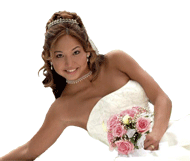

Before the advent of Christianity, a marriage consisted of three ceremonial events. These were the engagement where a man and woman were promised to each other, the wedding where the bride was formally given to the bridegroom (usually by her father), and the bedding where the couple went to bed together in the presence of witnesses.
This was also a period when magic and evil spirits affected the lives of the people. It was therefore important that good luck charms and rituals were used to keep the bride and groom safe on their wedding day and to ensure their future was filled with happiness. These superstitions and rituals continued through the centuries and developed into the traditions now associated with a modern marriage ceremony.
Many marriages were based on verbal consent and the Church found it necessary to create marriage ceremonies and legislation to make marriage a legal and binding contract. As marriage was now a sacrament, instituted by God, mutual consent from both future partners was demanded and the husband was expected to be faithful to his new bride.
Wedding ceremonies became public affairs and the first part of the ceremony took place outside the church where the priest would ask for the mutual consent of the man and the woman. The priest then blessed the ring which was sprinkled with holy water and finally he would bless the couple. Only after the blessings would the wedding party move into the church. Inside, a "bridal mass" was celebrated. This consisted of prayers, hymns, bible readings, and the bridal benediction. A communion followed the benediction where the ritual kissing of the bride took place. In the evening, there was the bedding. The Church adopted this pagan custom and converted it into a blessing of the matrimonial bed.

How Marriage Began































